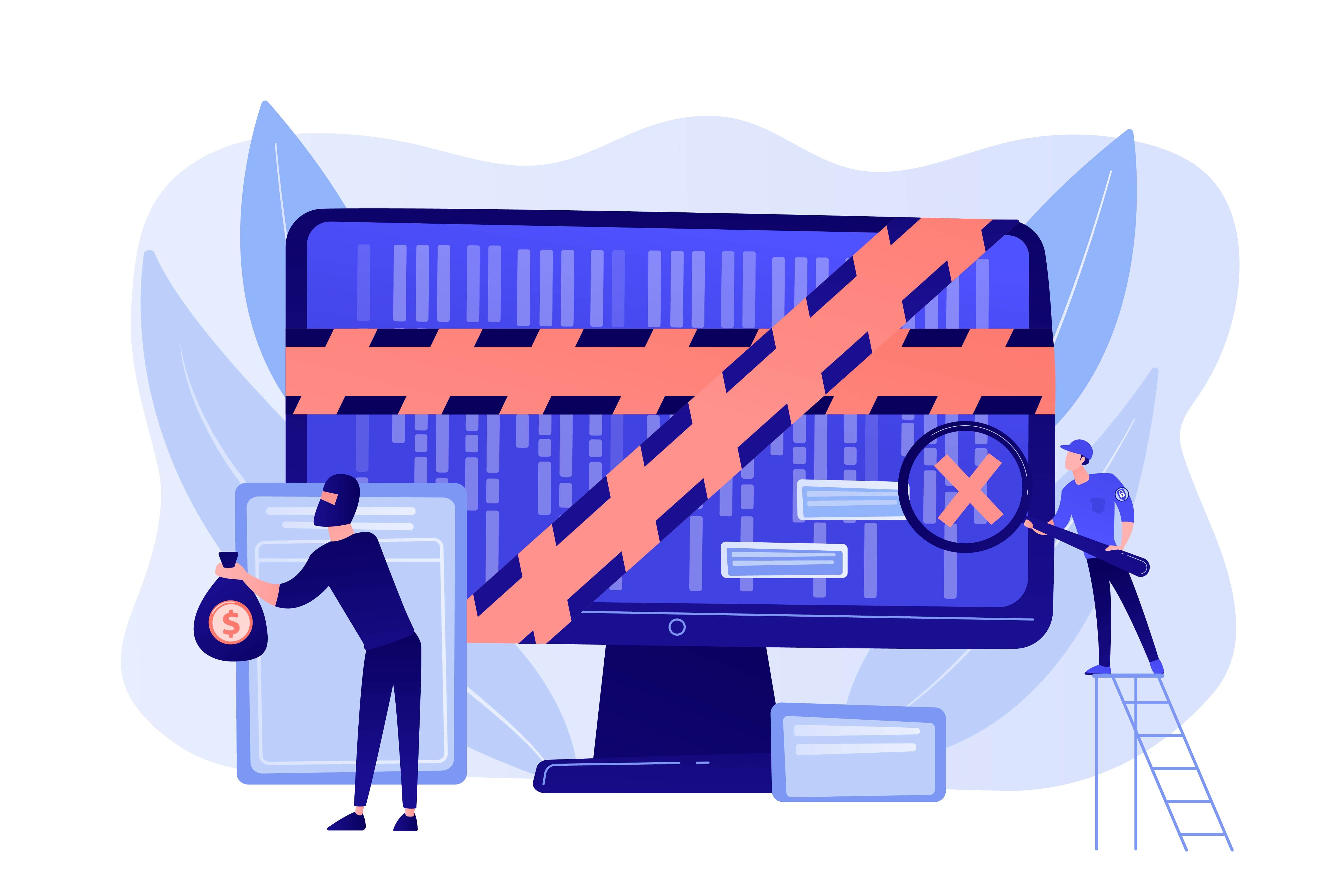
How to Handle Zero-Day Vulnerability Exploits
Zero-day vulnerabilities and exploits are a major cybersecurity concern, especially as they can come without warning and are often impossible to predict. This kind of cyberattack can impact organizations of all types and sizes.
However, the good news is that there are ways to reduce your risk of zero-day vulnerabilities. In this guide, we’ll cover everything you need to know about zero-day threats, including what they are, how they work, and how they can be mitigated.
What is a zero-day vulnerability?
A zero-day vulnerability refers to any security vulnerability that has not been discovered yet by the software vendor (or whoever is responsible for patching vulnerable systems). Because software developers are unaware the vulnerability even exists, they have “zero days” to introduce a security patch before the vulnerability can be exploited by threat actors.
Zero-day vulnerabilities most commonly refer to software vulnerabilities, but they can exist in hardware and firmware as well.
Types of zero-day attacks
The types of zero-day exploits used by cybercriminals can come in several different forms. Some of the most common types of zero-day attacks include:
Malware: Malware is a type of malicious code designed to infiltrate, damage, or disable computer systems.
Ransomware: Ransomware is a specific type of malware that encrypts the target’s data. Hackers will then demand a ransom from the target in exchange for the decryption key.
Phishing: Phishing involves setting up a fake website that’s designed to mimic a reputable entity. Malicious actors will then use this fake website to capture password information and other sensitive data.
Advanced persistent threats (APTs): APTs are prolonged and targeted cyberattacks in which an intruder gains access to a network and remains undetected for an extended period of time.
Common targets and high-profile attacks
Zero-day attacks commonly target widely-used software systems in order to maximize their impact. This includes software systems such as Microsoft Windows and Linux, as well as web browsers like Microsoft Edge and Google Chrome. However, it’s important to remember that these exploits can target any system, regardless of how widely used it is.
Zero-day attacks can be conducted by individual hackers but are also perpetrated by nation-state actors. Russia, China, North Korea, and Iran are just a few of the nations that have used zero-day exploits in the past for the purpose of state-sponsored espionage and sabotage.
As for examples of zero-day attacks, there are several high-profile instances where hackers exploited an unknown security flaw. This includes attacks such as Stuxnet in 2010 (which was designed by the United States and Israel that reportedly cause significant damage to Iran’s nuclear program), the Wannacry Attack in 2017 (which exploited a Microsoft vulnerability to infect over 200,000 computers), and Operation Aurora in 2009 (which exploited a vulnerability in Internet Explorer to gain access to the data of numerous high-profile companies).
How they work
Zero-day attack is an umbrella category that can encompass several different types of security threats. What makes an attack qualify as a zero-day attack isn’t the type of malicious code used or even the type of vulnerability being exploited, but the fact that security teams are unaware of the vulnerability until the attack has already taken place.
That said, zero-day attacks do tend to follow a specific lifecycle. This starts with malicious actors discovering an unknown vulnerability in a system. Once a vulnerability has been discovered, hackers will then develop a way to exploit it. Malicious code is then distributed, and the attack is launched.
In a zero-day attack, this is the point when cybersecurity teams will first learn about the security risk. And with an attack already in progress, every second counts. Upon learning about the vulnerability, software vendors will get started working to develop a patch. Developing this patch and applying software updates as quickly as possible is a major key to limiting the damage of zero-day exploits.
Preventing zero-day exploits
Zero-day exploits can be challenging to prevent. After all, how do you defend against a vulnerability when you don’t even know that it exists?
While completely infallible cybersecurity is not possible, there are several strategies that organizations can use to mitigate their risk. When it comes to mitigating and preventing zero-day attacks, here are some of the most important strategies and best practices to employ:
Detection and threat intelligence
The benefit of real-time threat intelligence cannot be overstated. When you don’t know about a vulnerability until an attack is already underway, you’d better make sure you learn about the attack as soon as possible. This is where automated threat detection and intelligence solutions, such as those offered by SiteLock, can be incredibly valuable.
With real-time threat intelligence solutions, you can ensure that security risks are identified and flagged as quickly as possible, so their impact can be mitigated.
Proactive cybersecurity measures
If you prioritize proactive risk and vulnerability management, your organization is a lot less likely to fall victim to zero-day exploits.
This starts with implementing regular software updates and firmware updates. By keeping all of your systems up-to-date, you can ensure that patches are promptly applied to known vulnerabilities.
It’s also helpful to conduct routine vulnerability assessments. By performing regular and comprehensive website security audits and risk assessments of your IT infrastructure, you can prevent zero-day attacks by identifying vulnerabilities before malicious actors identify them for you.
Incident response and remediation
Not every zero-day attack can be prevented. That’s why it’s essential for security teams to develop robust incident response plans. Having these plans in place will ensure that your organization can respond to zero-day attacks in a way that’s swift and effective at minimizing damage.
Zero-day attack incident response plans should outline steps for identifying security threats, containing their impact, eliminating the threat, and recovering any data or system functionality that was lost.
In addition to developing a thorough incident response plan, another way to improve your organization’s ability to respond to zero-day attacks is to conduct regular training and drills. Exercises designed to simulate zero-day attacks will familiarize everyone in your organization with the incident response plan and the role they play in it, and this helps ensure a swift and error-free response in the event of a real attack.
Mitigation best practices
Along with everything we’ve covered so far, there are several other best practices that organizations can implement to mitigate the risk of zero-day exploits. This includes important best practices, such as:
Proactive patch management: You should implement a structured patch management policy that’s designed to ensure that all your software, operating systems, and applications are regularly updated and patched. This is something that SiteLock’s vulnerability patching feature can help with.
Use of antivirus software, firewalls, and endpoint protection: Cybersecurity controls such as antivirus software, web application firewalls (WAFs), and endpoint protection platforms can help detect and eliminate zero-day threats in all their various forms.
Reducing your attack surface with zero trust security: Zero trust architecture leverages access controls and identity verification mechanisms to ensure no unauthorized users can access your systems and network.
Taking a collaborative approach to cybersecurity: Security teams, software developers, and security researchers should collaborate closely to develop applications that are as secure as possible.
Stop zero-day threats with SiteLock
Preventing zero-day attacks and mitigating their impact requires a comprehensive approach to cybersecurity. SiteLock offers comprehensive website security tools and services in one convenient package.
Want to get started bolstering your organization’s security and reducing the threat of zero-day exploits? Be sure to check out SiteLock’s pricing today!





